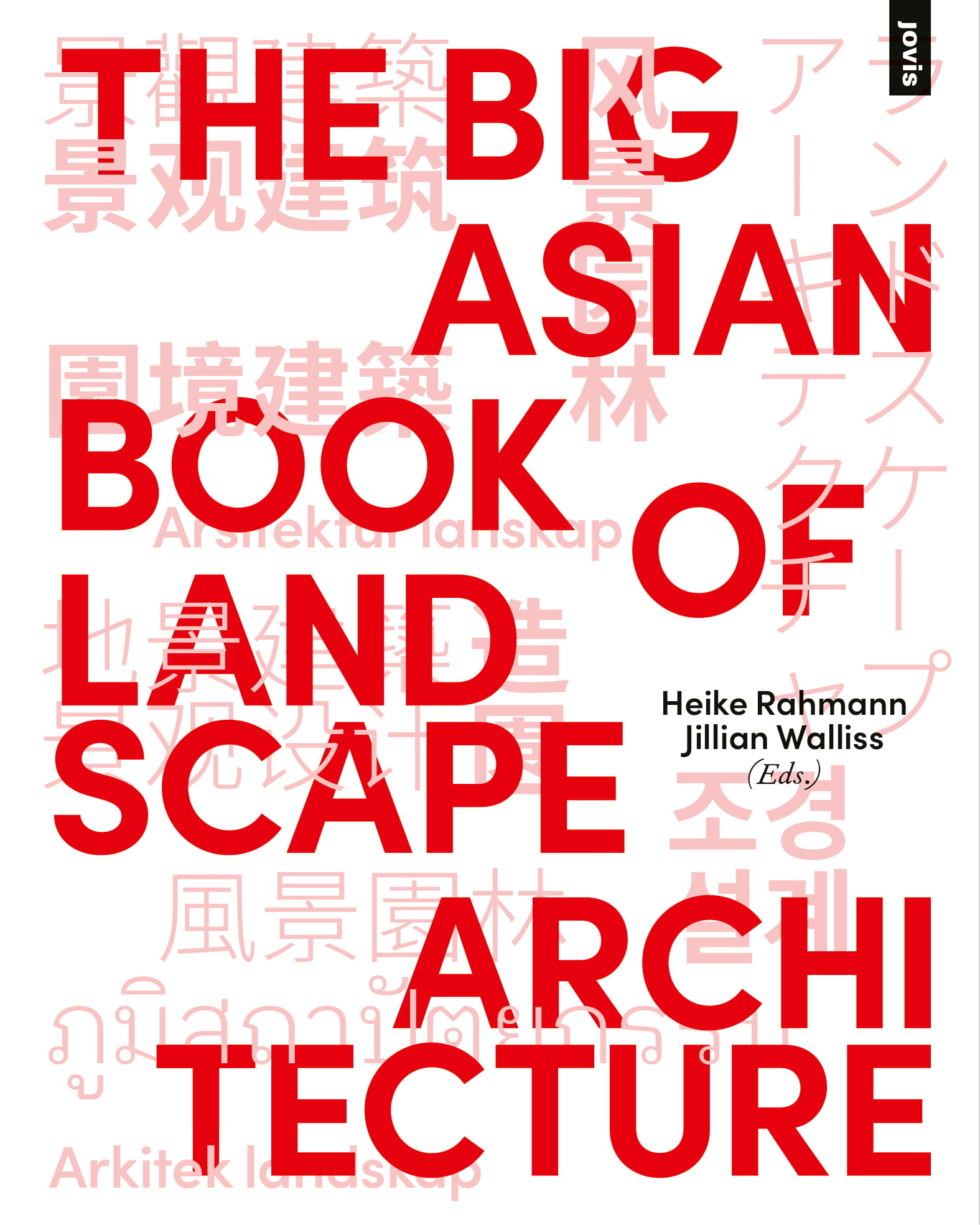The Big Asian Book of Landscape Architecture

What do we really know about contemporary Asian landscape architecture? From outside of the region, knowledge is sporadic, gleamed from project descriptions on websites or the rare presentation at a conference. Within Asia, there has been limited exchange, complicated by the relative youth of the discipline, along with the fact that a collective notion of an Asian identity is new. With so many designers and academics studying and training overseas, there is a tendency to look to international influences for validation or inspiration over peers. As a consequence, Asian knowledge is often conceived relative to North American or European perspectives, which can cloud what is particular or unique to landscape practice.
The Big Asian Book of Landscape Architecture aims to address this gap. Through the framing of ‘Asia as Method,’ this book documents an emerging, diverse, and adventurous contemporary landscape practice (post 2000). Importantly, it establishes Asia as multiple and overlapping framings and ideas rather than defining knowledge and design approaches by geographies. Defining Asia is an impossibility and inspires endless debate. Consequently, the book is not conceived as a national catalogue or a record of ‘Asian’ design projects. Instead it aims to build a picture of what it means to design, do business, and think about nature, space, and urbanism with an Asian sensibility.
The origins of the book lie in a two-day workshop held in Beijing in January 2019. We set about inviting a practitioner and academic from different Asian contexts to attend the ‘The Big Asian Book’ workshop. Over Chinese banquets, breakfasts, smoke breaks and discussion sessions, people got to talk and know each other. We set up exercises as a catalyst for establishing the book’s major framings. These included understanding design projects without relying on Western classifications and typologies of space and exploring the diverse terminologies and concepts related to ‘landscape’ in different languages.
Informed by these discussions, we established the book’s tripartite structure of Continuum, Interruption, and Speed, which offer ways for conceiving design through characteristics that simultaneously influence an Asian practice.
Continuum establishes some of the shared cultural and philosophical understandings of space, time and nature that cross the Asian region and explores how these are interpreted within contemporary design practice. While the discipline of landscape architecture is new, this knowledge is many centuries old and supports the adoption of 'Inter-Asia referencing’ as a method for deepening understandings of Asian landscape architecture through grounded knowledge.
Interruption explores the impact of modernity and economic growth on Asia. Urbanisation shaped by complex relationships between government, developers, international and local investment, and citizens underpins the introduction of new open space typologies and the emergence of landscape architecture as a discipline. While these typologies may resemble Western models they defy classifications such as public and private space, instead operating distinctly in Asian economic, cultural and political contexts.
Speed examines how governments and designers are responding to the boom and bust cycles of economic development, the imbalance of rural and urban processes, and the density of the Asian city. Rather than viewed as a hinderance, speed can be considered a mechanism for innovation and change, acting as a catalyst for fast and slow design practice as Asian societies transition into a new phase of development.
The book is designed to encourage readers to ‘dip’ into content. Featured design projects were selected from an open project call distributed through Asian landscape professional bodies (aided by IFLA links) and are weighted to showcase the most recent and innovative work. Over 80 design projects are included, presented either as stand-alone or discussed as part of academic essays. Projects from Japan, Korea, mainland China, and Singapore dominated the project call, reflective of the different stages of professional and economic development in the region. We have tried to offer the widest possible representation of projects (but not at the expense of merit), and have limited work produced by international designers to that, which demonstrates ideas of significance to Asian understandings.
And finally, a word on the title. We never came up with a better title than the workshop name The Big Asian Book. It stuck. Over time the unusual word order has made more sense. We believe this is the first book to document emerging design and theoretical directions for contemporary Asian landscape architecture. It is a book written for the next generation of Asian designers offering much needed culturally specific theory, along with a celebration of an extraordinary body of design work which is largely unknown to a wider English-speaking audience. This is why the emphasis is on ‘Big’ as a celebration of the diversity and complexity of ideas and ‘Asian’ in recognition of this new collectiveness of ‘Asia.’
Similar to the initial workshop, we hope that this book will stimulate a wide range of discussions (virtual and in person). Due to the pandemic the book’s distribution has been held up, but we are now seeing it available in Japan, Korea, Singapore, and other locations.
We look forward to having some book launches once travel resumes and discussing the many ideas in a more festive and personable setting. In the meantime, we would love to hear your comments and thoughts via email.
Heike and Jillian
https://www.jovis.de/en/books/details/product/the-big-asian-book-of-landscape-architecture.html

